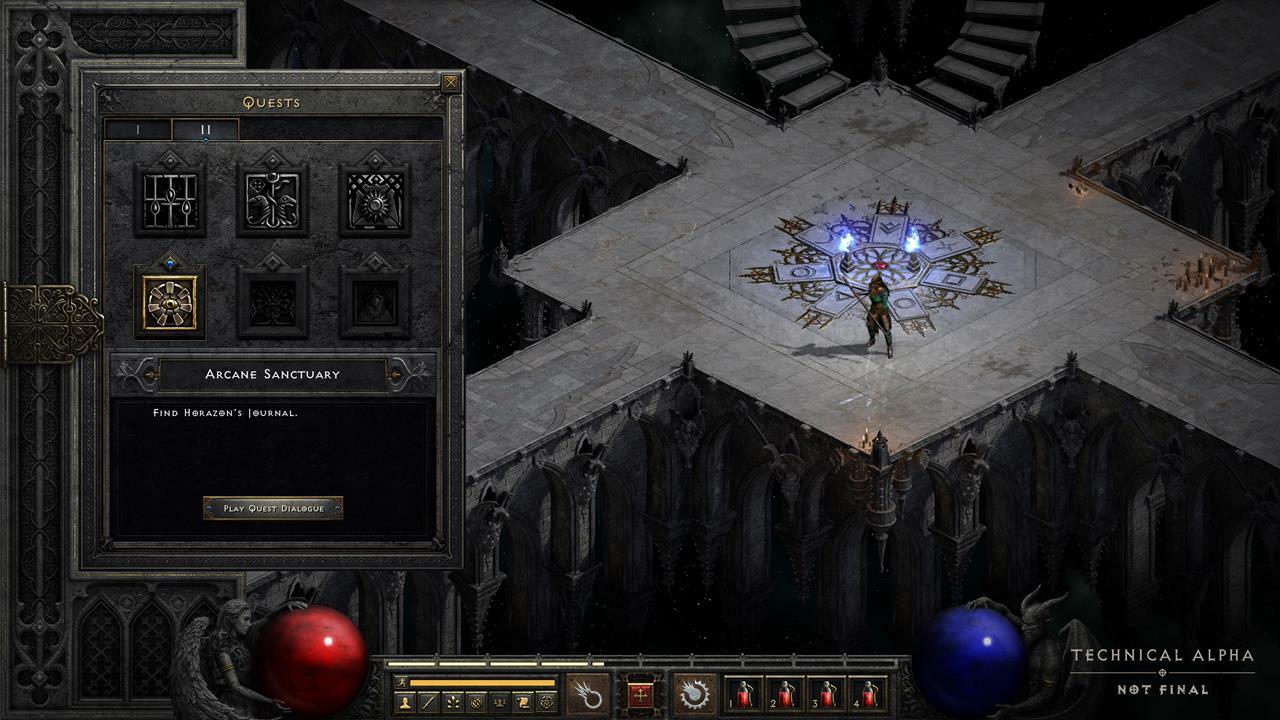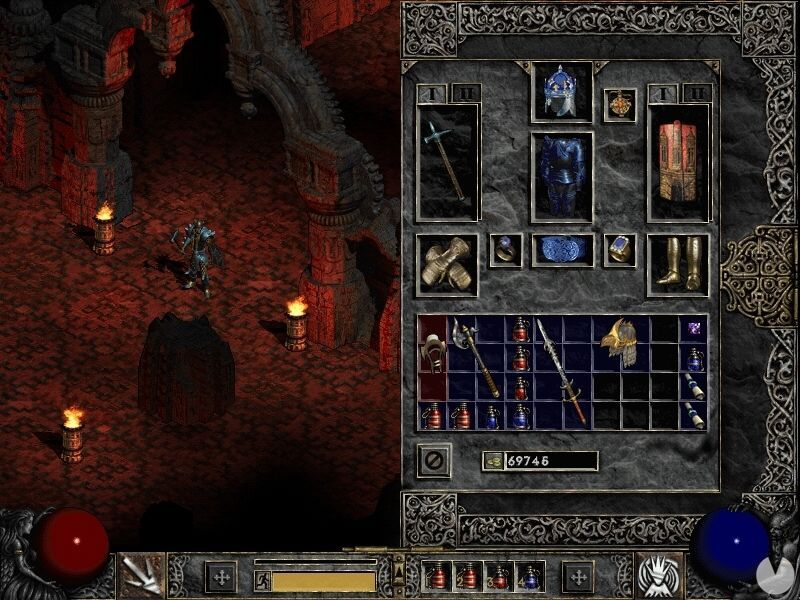

When you use a controller, there’s a complete change in the UI, how enemies are targeted, how spells are equipped, and there’s even added functionality to help organize your inventory, since that’s such an important part of Diablo 2, and doing so with a controller is so much slower than using a mouse. One other notable difference is the fact that Diablo 2: Resurrected now has controller support, and it’s not just as simple as plugging in a controller and all of sudden all of the keys get mapped to buttons on the controller. It really makes a huge difference in atmosphere when you walk into a room with a five-pointed star made of fire, and that fire actually looks like… well, fire, and not just a bunch of copied and pasted fire sprites in the shape of a star. In a deep dive panel on this remaster, Lead Artist Chris Amaral talked about how there’s a 70/30 philosophy where 70% of the art in any area is left alone as the “classic” art, and that extra 30% is then used to elevate that classic art, and that philosophy was definitely felt as I played. Everything has been completely redone from the ground up, replacing the pixelated sprites with gorgeous 3D models, adding new lighting effects to the environment, and if for whatever reason you prefer the old style, you can switch between the two visuals seamlessly with the press of a button.

This is absolutely not a case like Warcraft 3: Reforged with only marginally improved character models and a bump in resolution. Better, because it provides an alternative to Diablo 3’s much more streamlined and more forgiving gameplay, while also giving a less complicated alternative to a game like Path of Exile worse, because in the 20 intervening years since Diablo 2, the action RPG genre as a whole has improved upon Diablo 2’s archaic mechanics in ways that make it a bit hard to go back.īut to start, let’s focus on the good. But it also means that, for both better and for worse, Diablo 2 Resurrected still plays exactly as it did 20 years ago.


 0 kommentar(er)
0 kommentar(er)
